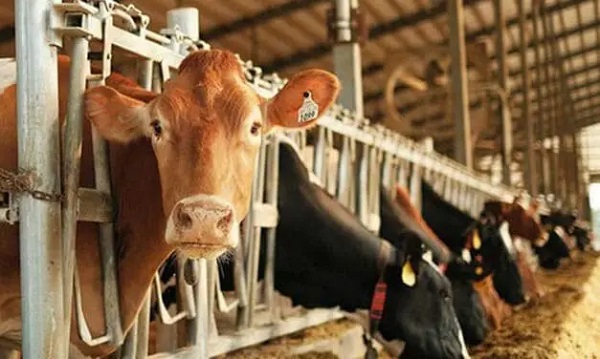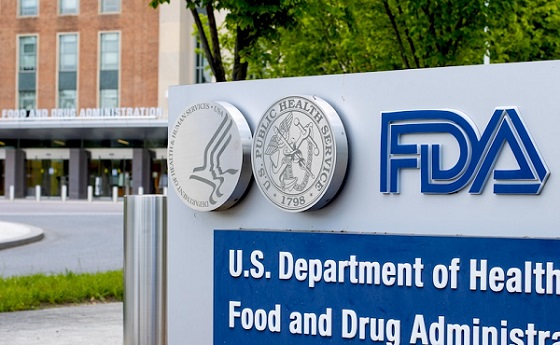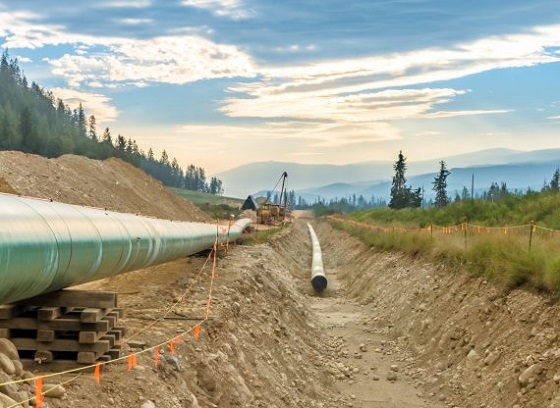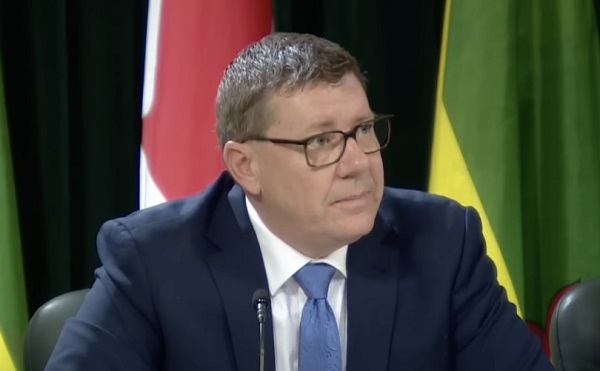Agriculture
How would you like it if someone came on to your land to build a pipeline?

How would you like it if someone came on to your land to build a pipeline?
This is one of the questions you’ve no doubt heard in the media lately. A common question from protestors and their supporters. It’s been posed to media reporters asking protestors why they’re trying to shut down Canada. It’s been used as a headline for editorials in big newspapers. If you live in a city or even a small community you’ve never had to deal with a company that wants to build a pipeline on your property. That seems to make this question a good one.
However I come from a farming community and it occurred to me that I might just know some people who’ve had experience with pipeline companies. So I decided to message a friend of mine. He used to be a pretty good hockey player when we were growing up. He played with a temper. Years may have passed but I know he’s definitely no push over. Devon is not the kind of guy who’d let anyone walk all over him. Even a big pipeline company.
Turns out Devon actually has lots of experience with pipelines. When he moved onto his acreage 20 years ago there were already 5 lines running under it. 2 more lines have been buried since. The last one came through just last year. If you look at the first map you can see a place called Herschel. Herschel is Devon’s territory. The map shows where Enbridge Line 3 Replacement cut through his property just last year. The second map shows just how many lines are following that same route.


When I discovered a new line had been put down in the last year I thought he’d have some fresh memories of how that affected his life. It was my chance to ask someone who actually knows “How would you like it if someone came on your land to build a pipeline?”
Me: “What happens during construction?”
Devon: “The only inconvenience during pipeline construction for us has been delays on the roads. They haven’t affected our home lives at all.”
Me: “What about animals? How long before things get back to normal in their world?”
Devon: “Wildlife doesn’t seem bothered at all.” Then he asked me “What’s normal?” – and he sent me a video taken right in his yard last summer.
Me: “OK. The animals appear not to mind. Does it affect the quality of your land?”
Devon: “We don’t farm the affected land, but Enbridge recovers the top soil and replants whatever vegetation you want. In our case, grass.”
Me: “What would happen to you if there was a spill on your property?”
Devon: “We have never had a spill, or know of anyone that has. They have given us contact information, and instruction if we ever encounter what we feel may be a spill. Several times a week they fly (over) the pipeline inspecting it.
Me: “Are you fairly compensated?”
Devon: “We have been treated very fairly by Enbridge.”
I have to admit I was hoping for even a tiny bit of drama in this back and forth conversation. Just like you would with any conversation. So I put my reporter skills to work and decided to finish by asking an “emotional” question. Certainly there has to be even a little bit of anxiety over having a pipeline carrying flammable material close to your home… right under your own property. Everyone knows there have been accidents. So the natural question is..
Me: “Wouldn’t you rather there were no pipelines under your land and close to your home?
Devon: “I was actually disappointed when they told us the line 6 replacement was being routed around our acreage because they felt it would be too close to the house. I actually have never thought about whether I would rather live where there’s no pipelines. They’ve never been an issue.”
If I had to conclude this and I do, I would say that it would seem my friend Devon is one of the vast majority of people who pay some type of price for the conveniences of modern society. In his case it’s doesn’t seem the price is very high. Maybe he thinks the compensation is actually worth it. No. He’s never experienced an accident. He doesn’t know of anyone who even knows anyone who has. Like the rest of us, he only knows they’ve happened because he pays attention to the news. The only real difference is Devon actually has a half dozen pipelines running across his property. As you can see from the second map above, the energy running through them keeps people in the Eastern United States and Eastern Canada, warm in their homes and mobile in their vehicles.
Here’s what pipelines look like for the vast majority of those who have to live with them. In Devon’s case, 20 years of living with pipelines and zero problems. He’s not going to claim nothing could ever happen. All he can say is that nothing has ever happened.
Read more on Todayville.com
Agriculture
Supply Management Is Making Your Christmas Dinner More Expensive

From the Frontier Centre for Public Policy
By Conrad Eder
The food may be festive, but the price tag isn’t, and supply management is to blame
With Christmas around the corner, Canadians will be heading to the grocery store to pick up the essentials for a tasty Christmas feast. Milk and eggs to make dinner rolls, butter for creamy mashed potatoes, an assortment of cheeses as an appetizer, and, of course, the Christmas turkey.
All delicious. All essential. And all more expensive than they need to be because of a longstanding government policy. It’s called supply management.
Consider what a family might purchase when hosting Christmas dinner. Two cartons of eggs, two cartons of milk, a couple of blocks of cheese, a few sticks of butter, and an eight-kilogram turkey. According to Agriculture and Agri-Food Canada and Statistics Canada, that basket of goods costs a little less than $80.
Using price premiums calculated in a 2015 University of Manitoba study, Canada’s supply management system is responsible for $16.69 to $20.48 of the cost of that Christmas dinner. That’s a 21 to 26 per cent premium Canadian consumers pay on those five staples alone. Planning on making a yogurt dip or serving ice cream with dessert? Those extra costs continue to climb.
Canadians pay these premiums for poultry, dairy and eggs because of how Canada’s supply management system works. Farmers must obtain government-issued production quotas that dictate how much they’re allowed to produce. Prices are set by government bodies rather than in an open market. High tariffs block imports and restrict competition from international producers.
The costs of supply management are significant, amounting to billions of dollars every year, yet they are largely hidden, spread across millions of households’ grocery bills. Meanwhile, the benefits flow to a small number of quota-holding farmers. Their quotas are worth millions of dollars and help ensure profitable returns.
These farmers have every incentive to lobby, organize and defend the current system. Wanting special protection is one thing. Actually being given it is another. It is the responsibility of elected officials to resist such demands. Elected to represent all Canadians, politicians should unapologetically prioritize the public interest over any special interests.
Yet in June 2025, Parliament did the opposite. Rather than solve a problem that costs Canadians billions each year, members of Parliament from every party, Liberal, Conservative, Bloc, NDP and Green, unanimously approved Bill C-202, further entrenching the system that makes grocery bills more expensive at a time when families can least afford it. Bill C-202 prohibits Canada from offering any further market access concessions on supply-managed sectors in future trade negotiations.
This decision is even more disappointing when we consider what other nations have already accomplished. Australia and New Zealand demonstrate that removing supply management is not only possible but beneficial.
Australia operated a dairy quota system for decades before abolishing it in 2000. New Zealand began dismantling its dairy supply management regime in 1984 and completed the process in 2001. Both countries found that competitive markets provided their citizens with the access to goods they needed without the hidden costs. If these countries could eliminate supply management, so can Canada.
As the government scrambles to combat the rising cost of living, one of the simplest and most effective solutions continues to be ignored. Eliminating supply management. Removing the quotas, the price controls and the tariffs would allow market competition to do what it does across every other product category. It delivers choice, quality and affordability.
As Canadians gather for Christmas dinner, the feast may be delicious, but it will once again be more expensive than it needs to be. That is the cost of supply management, and Canadians should no longer have to bear it.
Conrad Eder is a policy analyst at the Frontier Centre for Public Policy.
Agriculture
Why is Canada paying for dairy ‘losses’ during a boom?

This article supplied by Troy Media.
Canadians are told dairy farmers need protection. The newest numbers tell a different story
Every once in a while, someone inside a tightly protected system decides to say the quiet part out loud. That is what Joel Fox, a dairy farmer from the Trenton, Ont., area, did recently in the Ontario Farmer newspaper.
In a candid open letter, Fox questioned why established dairy farmers like himself continue to receive increasingly large government payouts, even though the sector is not shrinking but expanding. For readers less familiar with the system, supply management is the federal framework that controls dairy production through quotas and sets minimum prices to stabilize farmer income.
His piece, titled “We continue to privatize gains, socialize losses,” did not come from an economist or a critic of supply management. It came from someone who benefits from it. Yet his message was unmistakable: the numbers no longer add up.
Fox’s letter marks something we have not seen in years, a rare moment of internal dissent from a system that usually speaks with one voice. It is the first meaningful crack since the viral milk-dumping video by Ontario dairy farmer Jerry Huigen, who filmed himself being forced to dump thousands of litres of perfectly good milk because of quota rules. Huigen’s video exposed contradictions inside supply management, but the system quickly closed ranks until now. Fox has reopened a conversation that has been dormant for far too long.
In his letter, Fox admitted he would cash his latest $14,000 Dairy Direct Payment Program cheque, despite believing the program wastes taxpayer money. The Dairy Direct Payment Program was created to offset supposed losses from trade agreements like the Comprehensive Economic and Trade Agreement (CETA), the Comprehensive and Progressive Agreement for Trans-Pacific Partnership (CPTPP) and the Canada–United States–Mexico Agreement (CUSMA).
During those negotiations, Ottawa promised compensation because the agreements opened a small share of Canada’s dairy market, roughly three to five per cent, to additional foreign imports. The expectation was that this would shrink the domestic market. But those “losses” were only projections based on modelling and assumptions about future erosion in market share. They were predictions, not actual declines in production or demand. In reality, domestic dairy demand has strengthened.
Which raises the obvious question: why are we compensating dairy farmers for producing less when they are, in fact, producing more?
This month, dairy farmers received another one per cent quota increase, on top of several increases totalling four to five per cent in recent years. Quota only goes up when more milk is needed.
If trade deals had actually harmed the sector, quota would be going down, not up. Instead, Canada’s population has grown by nearly six million since 2015, processors have expanded and consumption has held steady. The market is clearly expanding.
Understanding what quota is makes the contradiction clearer. Quota is a government-created financial asset worth $24,000 to $27,000 per kilogram of butterfat. A mid-sized dairy farm may hold about $2.5 million in quota. Over the past few years, cumulative quota increases of five per cent or more have automatically added $120,000 to $135,000 to the value of a typical farm’s quota, entirely free.
Larger farms see even greater windfalls. Across the entire dairy system, these increases represent hundreds of millions of dollars in newly created quota value, likely exceeding $500 million in added wealth, generated not through innovation or productivity but by a regulatory decision.
That wealth is not just theoretical. Farm Credit Canada, a federal Crown corporation, accepts quota as collateral. When quota increases, so does a farmer’s borrowing power. Taxpayers indirectly backstop the loans tied to this government-manufactured asset. The upside flows privately; the risk sits with the public.
Yet despite rising production, rising quota values, rising equity and rising borrowing capacity, Ottawa continues issuing billions in compensation. Between 2019 and 2028, nearly $3 billion will flow to dairy farmers through the Dairy Direct Payment Program. Payments are based on quota holdings, meaning the largest farms receive the largest cheques. New farmers, young farmers and those without quota receive nothing. Established farms collect compensation while their asset values grow.
The rationale for these payments has collapsed. The domestic market did not shrink. Quota did not contract. Production did not fall. The compensation continues only because political promises are easier to maintain than to revisit.
What makes Fox’s letter important is that it comes from someone who gains from the system. When insiders publicly admit the compensation makes no economic sense, policymakers can no longer hide behind familiar scripts. Fox ends his letter with blunt honesty: “These privatized gains and socialized losses may not be good for Canadian taxpayers … but they sure are good for me.”
Canada is not being asked to abandon its dairy sector. It is being asked to face reality. If farmers are producing more, taxpayers should not be compensating them for imaginary declines. If quota values keep rising, Ottawa should not be writing billion-dollar cheques for hypothetical losses.
Fox’s letter is not a complaint; it is an opportunity. If insiders are calling for honesty, policymakers should finally be willing to do the same.
Dr. Sylvain Charlebois is a Canadian professor and researcher in food distribution and policy. He is senior director of the Agri-Food Analytics Lab at Dalhousie University and co-host of The Food Professor Podcast. He is frequently cited in the media for his insights on food prices, agricultural trends, and the global food supply chain.
Troy Media empowers Canadian community news outlets by providing independent, insightful analysis and commentary. Our mission is to support local media in helping Canadians stay informed and engaged by delivering reliable content that strengthens community connections and deepens understanding across the country.
-

 Business2 days ago
Business2 days agoArgentina’s Milei delivers results free-market critics said wouldn’t work
-

 Health20 hours ago
Health20 hours agoFDA warns ‘breast binder’ manufacturers to stop marketing to gender-confused girls
-

 espionage1 day ago
espionage1 day agoCarney Floor Crossing Raises Counterintelligence Questions aimed at China, Former Senior Mountie Argues
-

 Daily Caller20 hours ago
Daily Caller20 hours agoTrump Reportedly Escalates Pressure On Venezuela With Another Oil Tanker Seizure
-

 Business1 day ago
Business1 day agoTaxing food is like slapping a surcharge on hunger. It needs to end
-

 Energy1 day ago
Energy1 day ago75 per cent of Canadians support the construction of new pipelines to the East Coast and British Columbia
-

 Business11 hours ago
Business11 hours agoThere’s No Bias at CBC News, You Say? Well, OK…
-

 Health1 day ago
Health1 day agoAll 12 Vaccinated vs. Unvaccinated Studies Found the Same Thing: Unvaccinated Children Are Far Healthier









